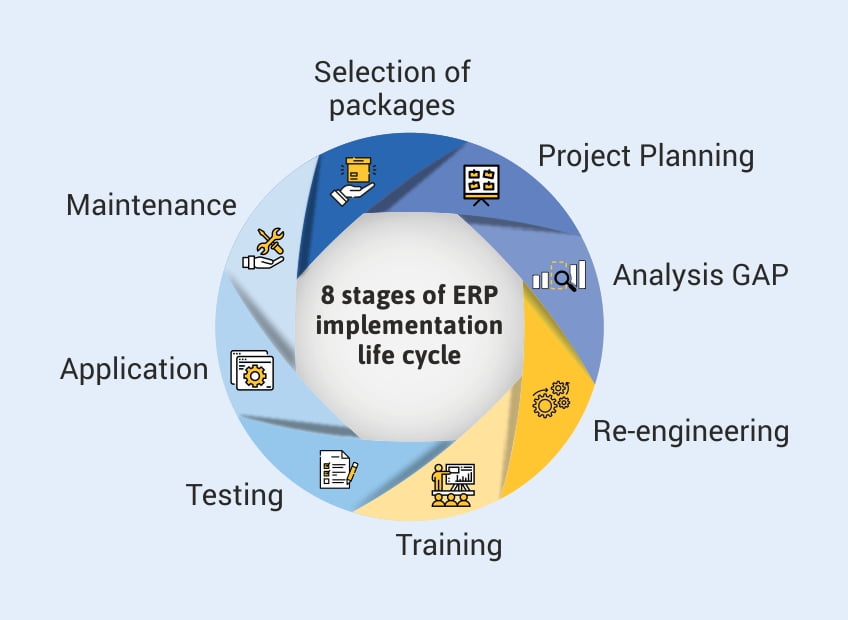Implementing an Enterprise Resource Planning (ERP) system is a pivotal step for any business looking to streamline its operations and enhance efficiency. This guide will explore various ERP implementation strategies suited for businesses of all sizes, using insights and examples particularly relevant for users of iSky ERP, which serves companies in Saudi Arabia and the UAE.
1. Assessing Your Needs Before selecting an ERP system like iSky ERP, it’s crucial to thoroughly assess your business needs. Identify key pain points in your current processes and determine what you hope to achieve with ERP implementation. Consider factors such as scalability, user-friendliness, and integration capabilities.
- Small Businesses: Focus on ERP solutions that offer basic functionalities that are easy to use and quick to implement.
- Medium Businesses: Look for systems that offer more customization options and can handle increased operational complexity.
- Large Enterprises: Opt for ERP systems that can integrate smoothly with other enterprise-level software and offer extensive customization and scalability.
2. Choosing the Right ERP System Selecting the right ERP system involves evaluating multiple vendors and their products. Factors to consider include:
- Cost: Understand all costs involved, including licensing, implementation, and ongoing maintenance.
- Technology: Choose a system that uses technology compatible with your existing IT infrastructure.
- Vendor Reputation and Support: Evaluate the vendor’s track record and the support services they offer.
3. Planning and Preparation Once you’ve chosen an ERP system, meticulous planning is essential. Create a detailed roadmap for implementation that includes:
- Project Scope: Define clear objectives and deliverables.
- Resource Allocation: Determine the personnel and time required.
- Risk Management: Identify potential risks and mitigation strategies.
4. Customization and Integration Tailoring the ERP to your specific needs is critical for maximizing its effectiveness. Decide on the degree of customization needed and plan for the integration with existing systems.
- Data Migration: Plan for a careful and systematic migration of existing data to the new ERP system.
- Testing: Thoroughly test the ERP system to ensure all functions operate as expected before going live.
5. Training and Support Effective training and ongoing support are vital to ensure that your team can use the ERP system effectively.
- Training Programs: Develop comprehensive training programs that cater to different user levels within your organization.
- Support Structure: Ensure that ongoing support is available to address any issues that arise post-implementation.
6. Going Live and Beyond Going live with a new ERP system is just the beginning. Continuous monitoring and evaluation are needed to ensure the ERP meets your business needs effectively.
- Feedback Loop: Establish mechanisms for users to provide feedback on ERP usage and challenges.
- Continuous Improvement: Regularly review system performance and user feedback to identify areas for improvement.
Conclusion ERP implementation is a significant investment in time and resources, but with the right approach, it can greatly enhance operational efficiency and business insights. For businesses in Saudi Arabia and the UAE using iSky ERP, provided by iskycreative.com and isky.ae, following these strategies can help ensure a successful ERP deployment that supports business growth and adaptation to rapidly changing market conditions.
This guide offers a comprehensive look at ERP implementation strategies, designed to help businesses of all sizes achieve a smooth and effective transition to an integrated ERP system like iSky ERP.
